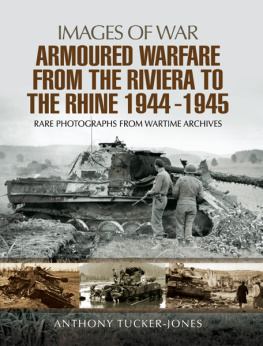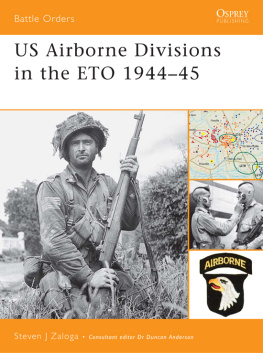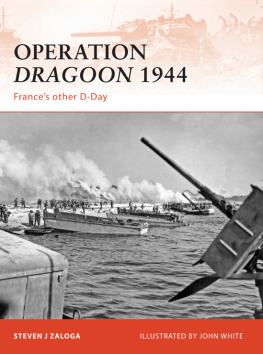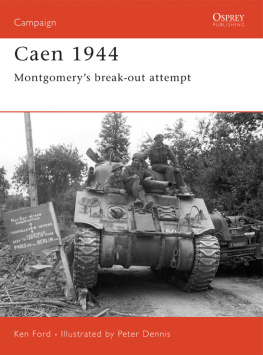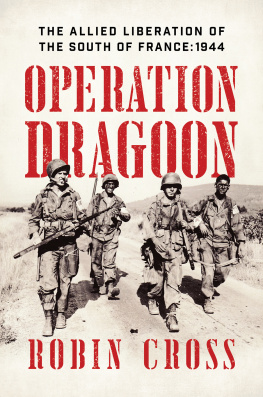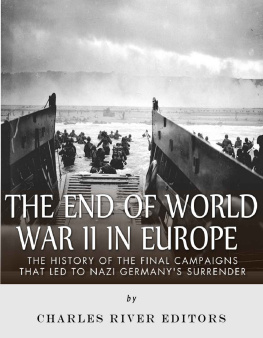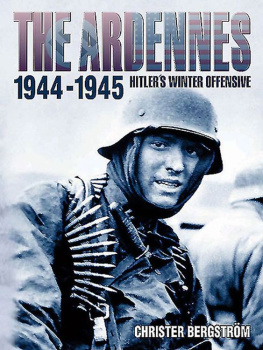Published in the United States of America and Great Britain in 2015 by
CASEMATE PUBLISHERS
1950 Lawrence Road, Havertown, PA 19083
and
10 Hythe Bridge Street, Oxford, OX1 2EW
Copyright 2015 Nathan N. Prefer
ISBN 978-1-61200-322-1
Digital Edition: ISBN 978-1-61200-323-8
Cataloging-in-publication data is available from the Library of Congress and the British Library.
All rights reserved. No part of this book may be reproduced or transmitted in any form or by any means, electronic or mechanical including photocopying, recording or by any information storage and retrieval system, without permission from the Publisher in writing.
10 9 8 7 6 5 4 3 2 1
Printed and bound in the United States of America.
For a complete list of Casemate titles please contact:
CASEMATE PUBLISHERS (US)
Telephone (610) 853-9131, Fax (610) 853-9146
E-mail:
CASEMATE PUBLISHERS (UK)
Telephone (01865) 241249, Fax (01865) 794449
E-mail:
CONTENTS
MAPS
The action of the 3rd U.S. Division and the remainder of the 21st Corps in the Colmar pocket might have been more strikingly portrayed to the people at home .
General Dwight D. Eisenhower, to Omar Nelson Bradley and Jacob Loucks Devers, March 12, 1945
The presence of rotting logs deep in the forest primeval testifies that they do indeed crash to the earth even if no ones around to hear them. The fact that a battle is unknown, was passed over in silence, does not by any means justify the notion that it was not fought, or, more precisely, that in some way it was an insignificant struggle, a mere skirmish .John Mosier, Verdun, The Lost History of the Most Important Battle of World War I , 2013
Major General Raymond O. Barton of the American 4th Infantry Division visited one of his battalions to spur them on with assurances that the German formation in front of them [in 1944 France] was only second rate and not much of an opponent. A young S-2 (Intelligence) lieutenant remarked: General, I think youd better put the Germans on the distribution list. They dont seem to realize that.
Russell F. Weigley, Eisenhowers Lieutenants , 1981
I hope that in the final settlement of the war, you insist that the Germans retain Lorraine because I can imagine no greater burden than to be the owner of this nasty country where it rains everyday and where the whole wealth of the people consists in assorted manure piles .General George S. Patton, Jr., letter to Secretary of War Henry L. Stimson
Campaigns and battles are nothing but a long series of difficulties to be overcome. The lack of equipment, the lack of food, the lack of this or that are only excuses; the real leader displays his quality in his triumph over adversity, however great it may be .General of the Army George C. Marshall, Chief of Staff, U.S. Army
They wish to hell they were someplace else, and they wish to hell they would get relief. They wish to hell the mud was dry and they wish to hell their coffee was hot. They want to go home. But they stay in their wet holes and fight, and then they climb out and crawl through minefields and fight some more .Bill Mauldin
OTHER BOOKS BY NATHAN N. PREFER
MacArthurs New Guinea Campaign , 1995
Pattons Ghost Corps: Cracking the Siegfried Line , 1998
Vinegar Joes War: Stilwells Campaign for Burma , 2000
The Battle for Tinian: Vital Stepping Stone in Americas War Against Japan , 2012
Leyte 1944: The Soldiers Battle , 2012.
THE SIXTH ARMY GROUP
It was December 1944, and the Allies had managed to push a mere 22 miles inside the German border. Fighting since early June had cleared France and Belgium of German forces. More recently Holland had been partially liberated by a massive Anglo-American-Polish airborne and ground offensive which had opened a corridor through the country, but in the end had failed to bring Allied forces into northern Germany. The U.S. Ninth Army had cleared the Roer River Plain, and the First Army had bled itself heavily in clearing the Huertgen Forest. The First Canadian Army had cleared the French Channel coast and, after a critical delay, captured Antwerp, vital for logistic support of all the Allied armies. The British Second Army had finished clearing the Netherlands south and west of the Maas River. To the south, the U.S. Third Army had cleared Lorraine and reached the West Wall (Siegfried Line) along the Saar River. Further south, the 6th Army Group had occupied almost the entire west bank of the upper Rhine River except for a large German pocket around the French city of Colmar.
The 6th Army Group had almost not joined the battle in Western Europe. Strategic planners, heavily influenced by the American chiefs of staff, had originally planned a second invasion of France to support and join with the major landings in Normandy. The fate of this second invasion was heavily debated between the American and British planners, spurred by British Prime Minister Winston Churchills earnest desire to continue operations in the Mediterranean. After much argument, postponement and re-organization, the original plan to invade Southern France was executed on August 15, 1944.
Initial resistance was moderate, and the 6th Army Group advanced rapidly up the route towards the so-called Belfort Gap. Hard fighting took place around the French city of Montelimar before the beachhead could break out into open territory. Bypassing the Italian and Swiss Borders and leaving token forces to watch the German forces in Italy, the pursuit continued. Another heavy battle developed at Dijon, but the German forces were too weak to long delay the advancing Allies. Back along the Mediterranean coast, French forces fought hard for the French Mediterranean ports, particularly Marseille and Toulon, which were vital to maintain the advancing 6th Army Group. Their swift conquest of these cities allowed the Allies to obtain additional ports for logistical support, something that was sorely needed until the port of Antwerp could be restored to full service. It wasnt until the advancing armies entered the Vosges Mountains that German resistance stiffened considerably, and the consequence was a delayed advance to the German border at the Rhine. In accordance with an agreement with the Supreme Allied Commander, General Dwight D. Eisenhower, 6th Army Group assumed command over its two armiesU.S. Seventh Army and French First Armyon September 15, 1944.
Additional stands by the Germans at Epinal, St. Di, and on the Moselle River further slowed the advance, although the 6th Army Group kept pace with the equally delayed advances to their north. Nevertheless by mid-December 1944, the 6th Army Group was well entrenched along the Upper Rhine River. Only one glaring enclave remained in German hands west of the riverthat which surrounded the city of Colmar.
Although the original responsibility for planning and launching the invasion of Southern France rested with General Sir Henry Maitland (Jumbo) Wilson in his capacity as Supreme Allied Commander, Mediterranean Theater, by September 6th Army Group had come under the command of General Eisenhower, Supreme Commander, Allied Expeditionary Forces. General Eisenhower had a truly allied force under his command. The 21st Army Group included British, Canadian, Polish, French, Belgian, Czechoslovakian, Norwegian and other European troops in its ranks. The 12th U.S. Army Group consisted of mostly American troops. The newly added 6th Army Group added many more American and French troops to the mix.


